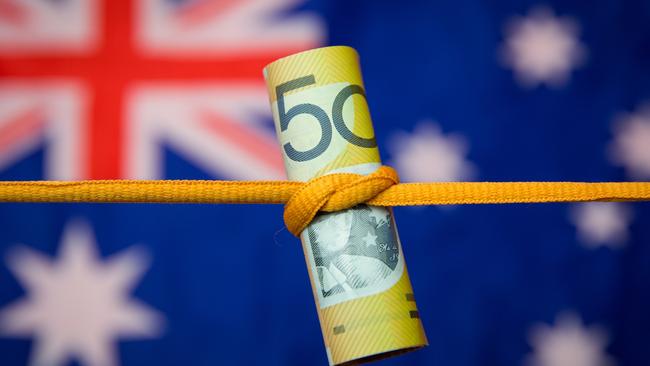Fels has his work cut out in ACTU price inquiry
Why have some price-setters been able to increase their prices so much, while others haven’t?

Veteran competition-tsar Allan Fels will chair the ACTU “price gouging” inquiry. What useful things might come from this?
It would get off to a good start if Fels encouraged participants to avoid using the term “price gouging”. There are serious analytical issues to be sorted out, and they won’t be helped by prejudging how price-setting works.
We should accept how little we know about how prices are set in the real world.
Just about everywhere, the expert forecasts of how inflation would behave in the post-Covid period have turned out to be wrong. Many central banks were slow to raise rates because they thought the price increases were temporary. At the same time, the pessimists who expected a return to the persistent increases of the 1970s were caught out by the recent easing of inflation.
These mis-forecasts occurred because too much attention was given to macro-level factors, and not enough (hardly any, except in anecdotes) to what was happening at the level of individual price-setters – firms and labour.
Some analysts still believe Milton Friedman’s dictum that “inflation is always and everywhere a monetary phenomenon”: for them, the action is always at the macro-level. Other forecasters confined themselves to analysing overall demand and supply.
But the standout factor of the post-covid experience is the diversity of price increases. Why were some price-setters able to increase their prices so much?
In America, car prices rose sharply, perhaps triggered by chip-shortages. But then they stayed elevated when there was a glut of chips.
The price of a cup of coffee typically rose far more than the cost of inputs. Some airline fares jumped while others didn’t, so input costs don’t explain the change.
Wages generally responded less than expected, given the tight labour market.
The interesting story is to be found at the micro-level. Some firms have always had some pricing-power: few markets have textbook “perfect competition”. But they are constrained in exercising this power in normal times. An environment of widespread price hikes, with lots of discussion about cost-of-living, gives them the opportunity.
But they might still be constrained, and don’t always exploit their pricing power. Tickets for Taylor Swift (and the Matildas) went on the market at one price, and were immediately on-sold in the secondary market at a much higher price. Why didn’t the promoters exploit their pricing power to the full? Is there some notion of a “just price”?
Micro-economic textbooks don’t help much here, with The Law of One Price refuted at every turn by price differentiation between similar products.
Worse still for simple theory, prices are rarely set by intersecting demand and supply curves, with selling price equal to marginal cost. Many firms have near-zero marginal cost, but have to recoup substantial fixed costs. They want to use their near-zero marginal cost to maximise the number of customers, but must charge other customers more to make a profit.
The market is split by type-of-buyer (new versus existing customers), time or place of purchase, bundling, loyalty schemes, special deals, points, targeted advertising, and minor product differentiation. Price discrimination is ubiquitous.
If firms could discriminate between every customer, they could take the whole of the textbook consumer surplus. But how can they prevent their customers from arbitraging the differences?
To understand all this, we need to consult marketing and behavioural experts, as well as economists.
As well, many prices are not set in the market at all: publicly-provided goods such as hospitals, security, public transport, schools, and infrastructure. Some private goods are free for consumers – social media, for example. Other prices are restrained by contracts which fix prices for a specific duration.
Above all, we need to understand what drives price increases to continue (in the jargon, to have persistence) rather than peter out after the initial shock. If prices are driven by supply-side shortages, why do they continue when supply is restored? Demand surges cool in time, so why do price rises continue?
What drives the round-robin price responses which give inflation the sort of persistence it had in the 1970s?
The overall environment matters here. This is why central bankers are so focused on nailing down inflation expectations with a credible inflation target: this sets the environment in which price setters weigh up their opportunities.
As well, the institutional environment matters: has it become normal to include cost-of-living clauses into wage agreements and rental contracts, embedding persistence?
What is the international environment, especially commodity prices, set in world markets? If a country’s terms-of-trade have shifted adversely, someone must bear this wealth reduction. This was an issue in Europe with gas price increases, but in Australia, as an energy exporter, our terms of trade improved. Thus it was a matter of factor shares: the energy exporters did well, and energy users were squeezed. Is this a stable outcome? How much pricing power do the losers (mainly labour) have to push back?
Those who increased their prices will argue that they were just responding to cost increases or restoring their share of GDP. Others might have to agree that they were responding to increased demand or, perhaps more frankly, charging what the market would bear.
Allan Fels will grapple with these diverse factors. His background in competition analysis is a great start. All these arguments will need to be understood to sort out causation. But talking about “price gouging” will not help.
Stephen Grenville is a former Reserve Bank deputy governor and a non-resident fellow at the Lowy Institute.



To join the conversation, please log in. Don't have an account? Register
Join the conversation, you are commenting as Logout